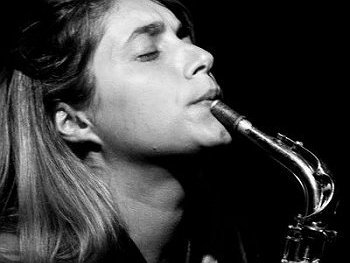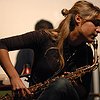A living thing
In the 20th century, the relationship between music and other forms of art - painting, video art and cinema most importantly - has become increasingly important. How do you see this relationship yourself and in how far, do you feel, does music relate to other senses than hearing alone?
When I listen to a sound, sometimes I can see colours or lights. When I look at an image, I can hear a sound. When I listen to certain kinds of music, I can feel that I'm standing in different geometrical forms and architectural spaces.
Beyond academic divisions, I can't ignore the growing relationship between the plastic arts and music in the world of contemporary art: the so-called 'sound art' where space is taken as a full dimension of a musical project and where time becomes a concrete component of a plastic work. I love this idea of an architectural space that takes its existence in a specific time and becomes like a living body where all the senses are working together.
In how much, do you feel, are creative decisions shaped by cultural differences - and in how much, vice versa, is the perception of sound influenced by cultural differences?
I think that with globalisation, there are less and less cultural differences. I like the idea of an emergency in ethno-musicology, which invites us to protect the numerous musical directories that are disappearing before our eyes.
Do you feel it important that an audience is able to deduct the processes and ideas behind a work purely on the basis of the music? If so, how do you make them transparent?
Improvisation allows the audience to assist with a live process. Sometimes, I like to make very obvious transitions but I believe the musical beauty comes from the surprise, when you disturb the listener in their interior listening. Nobody expects it, and the music takes a strange turn.
Usually, it is considered that it is the job of the artist to win over an audience. But listening is also an active, rather than just a passive process. How do you see the role of the listener in the musical communication process?
The environment is very important. Music is like a landscape. You have to lay down a network and then move with sounds within this network. The question of energy and emergence is fundamental. By penetrating the space, the public feeds it and makes it leave too.
Music-sharing sites and -blogs as well as a flood of releases in general are presenting both listeners and artists with challenging questions. What's your view on the value of music today? In what way does the abundance of music change our perception of it?
Contrary to some musicians who criticizes the excessive digital consumption of poor quality MP3 music, or in the face of hackers who "kill artists", I think the abundance of music is very positive. It promotes democratization of music and its access to the greatest number. It's now possible to have access to very rare resources and to discover artists more easily. I listen to a lot of music on websites like Deezer, Spotify or Myspace. It allows me to discover artists that I would have never discovered without the Internet. Besides, my own music also becomes more accessible due to Facebook or Myspace. I get often emails from people who discover my work by coincidence.
Objectively, the Internet doesn't kill anyone, it doesn't steal anything and instead it allows the exchange of culture between communities and networks of friends. The artists get together more easily through networks according to their aesthetic, political and artistic affinities, and this is very positive to me. It is also easier to produce music and get in touch with an audience. Traditional media like CDs etc. is renewed and it's great.
Please recommend two artists to our readers which you feel deserve their attention.







